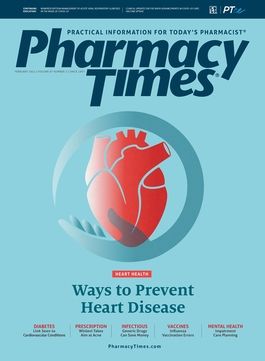It Is Go Time
Pharmacists must be ready to roll up their sleeves and administer the COVID-19 vaccine to millions of Americans.
During the 2020-2021 season, 174.5 million Americans received the influenza vaccine.1
That number of coronavirus disease (COVID-19) vaccines administered will need to be significantly higher to reach herd immunity.
Pharmacists have been preparing for this moment for more than 2 decades. Pioneers, including Col (Ret) John Grabenstein, RPh, PhD, who created the American Pharmacists Association’s immunization certificate program, started their work in the late 1990s. Grabenstein’s epidemiological training, military service, and pharmacy background gave him the perfect innovation environment to lead vaccination efforts for more than 9 million active duty members, retirees, and dependents within the military system of care. Those efforts informed community pharmacist immunization training and readiness.
Accessible, High-Throughput Locations
When you consider the more than 50,000 pharmacy sites that immunize and their advanced health care training, their industrially engineered throughput capabilities, their neighborhood presence, and their sites’ parking capacity, it adds up to a perfect fit for a pandemic response. Combined with primary care, our health care system has the capacity to respond, if we use it, in almost every nonrural area of the country and most rural areas.
COVID-19 Vaccination Rates Must be Higher Than Influenza Vaccination Rates
Unofficial estimates have herd immunity being reached at vaccination rates between 70% to 85% of the population and potentially higher if new variants are more contagious (think measles, where 90% or higher is the threshold for success). These are sobering statistics when compared with seasonal influenza vaccination rates for the 2020-2021, when about 46.8% of adult Americans were vaccinated.2 Even among health care providers involved in direct patient care, influenza vaccination rates languish at just above 70%.3 Community-wide influenza vaccination rates are nowhere near the rates we need to see to “get back to normal” with herd immunity against COVID-19. Even more ominous are the rates of vaccinations among minorities, which were just 38.5% for Black and 37% for Hispanic adults in the 2016-2017 season.3 These rates are of particular concern because COVID-19 case-fatality rates are much higher in minority populations, with the rates of hospitalization 3.7 times higher and 4.1 times higher than Whites, and deaths 2.8 times higher for both groups.4
Community Pharmacies Will Play an Outsized Role
Accessible, ready, and trusted with high throughput systems, community pharmacies are being called upon to play an outsized role in the pandemic response. Initially, because of both scarcity and a government prescribed rollout, the COVID-19 vaccination effort was largely led by health departments and hospitals, with pharmacists and pharmacies pitching in to help with processes and sites. Yet health departments and hospitals administer just 7.1% of adult and 6.4% of pediatric influenza vaccinations each year.5 Now that the CDC and the new presidential administration have started to pivot toward pharmacies and primary care as principal sites of administration, our work begins in earnest.
Vaccine Hesitancy
Although polls show that the percentage of Americans willing to get a COVID-19 vaccination is increasing, we have a long way to go to engender trust and willingness to receive it to achieve herd immunity. In nearly every poll, about one-third of the population will race toward the vaccine, about one-third are skeptical and unsure, and about one-third will actively avoid getting it.6,7 This presents a serious problem for achieving herd immunity. Not only do we need to convince all of the individuals who are unsure that they should be vaccinated, but we need to break into the “not going to get it” category substantially. Local and trusted health care professionals and social media influencers will be key to this effort. Pharmacists and primary care providers can approach local media to help spread the word, have strong suggestion scripts for staff members to use in their practices, and post information on social media, all of which will help us get “back to normal” this year. This assumes, however, that we will not need additional boosters or another version of a vaccine to combat this rapidly evolving virus.
All-for-One, One-for-All Approach
What else can you do? Cheer on fellow pharmacists and their support staff. Cheer on nurses and primary care providers and the local health department’s efforts. Of course, not everything has gone smoothly, but now more than ever is the time for care teams to work together. Help providers with logistics, scheduling, and queuing of patients. Volunteer if you do not practice regularly. Inspire students to participate. The pandemic is all around us, and we truly are all in this together.
TROY TRYGSTAD, PHARMD, PHD, MBA, is the vice president of pharmacy programs for Community Care of North Carolina, which works collaboratively with more than 1800 medical practices to serve over 1.6 million Medicaid, Medicare, commercially insured, and uninsured patients. He received his PharmD and MBA from Drake University in Des Moines, Iowa, and his PhD in pharmaceutical outcomes and policy from the University of North Carolina at Chapel Hill. He also serves on the board of directors for the American Pharmacists Association Foundation and the Pharmacy Quality Alliance.
REFERENCES
- CDC. Historical reference of seasonal influenza vaccine doses distributed. Updated September 9, 2020. Accessed February 3, 2021. www.cdc.gov/flu/prevent/vaccine-supply-historical.htm
- Clarke TC, Schiller JS, Boersma P. National health interview survey early release program. National Center for Health Statistics. September 2020. Accessed February 3, 2021. https://www.cdc.gov/nchs/data/nhis/earlyrelease/EarlyRelease202009-508.pdf
- CDC. Vaccination coverage among adults in the United States, National Health Interview Survey, 2017. Updated February 8, 2018. Accessed February 3, 2021. https://www. cdc.gov/vaccines/imz-managers/coverage/adultvaxview/ pubs-resources/NHIS-2017.html#flu
- CDC. COVID-19 hospitalization and death by race/ethnicity. Updated November 30, 2020. Accessed February 3, 2021. https://www.cdc.gov/coronavirus/2019-ncov/ covid-data/investigations-discovery/hospitalization-death-by-race-ethnicity.html
- CDC. Early-season flu vaccination coverage—United States, November 2018. Updated December 14, 2018. Accessed February 3, 2021. https://www.cdc.gov/flu/fluvaxview/ nifs-estimates-nov2018.htm
- Invisibly for Brands. Covid vaccine canvas. January 19, 2021. Accessed February 3, 2021. https://brands.invisibly. com/news/covid-vaccine-canvas
- AP-NORC Center for Public Affairs Research. Many remain doubtful about getting COVID-19 vaccine. December 9, 2020. Accessed February 3, 2021. https://apnorc.org/ projects/many-remain-doubtful-about-getting-covid-19- vaccine/

